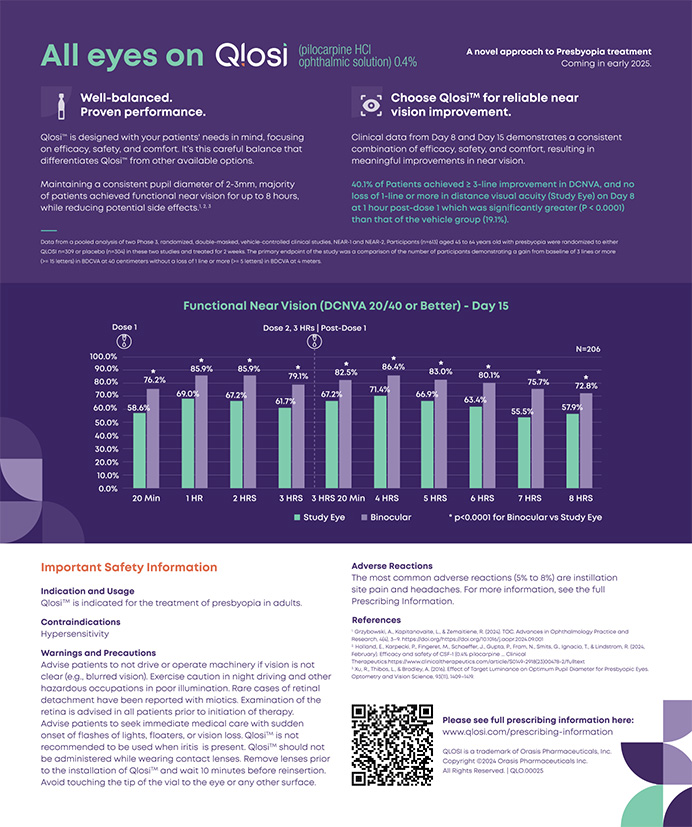I recall the moment I entered the black hole of presbyopia, never to regain normal vision again. I was driving in New York City and had written an address on a piece of paper. It was dark in the car, and no matter how I manipulated the paper in front of the vanity lights, I could not decipher what I had written. Finally, emotionally exhausted and slumped over the steering wheel, I drove to a drugstore and purchased my first pair of +1.25 D readers. At that instant, I realized that my life had changed forever.
Two defining ophthalmic moments in our lifetime identify middle and old age, respectively: the onset of presbyopia and the need for cataract surgery. We baby boomers fight the aging process. We spend billions of dollars on cosmetic surgery, antiwrinkle formulations, and hair dye. Once a week, I inform a 65-year-old patient that he or she has a cataract and hear the response, “That's impossible. I thought cataracts only occurred in old people.” As a refractive surgeon, every day, I speak to my patients about the virtues of LASIK, and they ask me why I wear glasses. I explain that I have perfect distance vision but that most people in their late 40s need to wear reading glasses. We then move on to their examination, but I sense their pity.
A decade ago, the FDA's approval of the first accommodating IOL and a new generation of multifocal IOLs ushered in the modern era of refractive cataract surgery. Ten years later, less than 8% of the cataract surgeries performed in the United States include the implantation of a presbyopia-correcting IOL. Although these IOLs offer advantages compared with traditional monofocal lenses, multifocal lenses also demand a highly precise refractive outcome to achieve their full potential. In this issue of Cataract & Refractive Surgery Today, Steven Dell, MD, Kerry Solomon, MD, and Rex Hamilton, MD, offer their pearls on how to achieve success with the Crystalens (Bausch + Lomb), AcrySof Restor IOL (Alcon Laboratories, Inc.), and Tecnis Multifocal IOL (Abbott Medical Optics Inc.).
In addition, this issue includes information on new and exciting presbyopia-correcting technologies moving at various speeds though the FDA approval process, including the Synchrony Vu IOL (Abbott Medical Optics Inc.), Power Vision IOL (PowerVision Inc.), and even an electroactive accommodating IOL with an intraocular battery, Sapphire AufoFocal IOL (Elenza, Inc.). Of course, monovision is often an excellent choice, as discussed by Graham Barrett, MD. This edition of CRST also covers exciting new options for the young presbyope who is not interested in intraocular surgery: multifocal excimer laser ablation and, reviewed by Richard Lindstrom, MD, several new, removable intracorneal inlays.
In my experience, the management of the presbyopic patient is one of the most challenging but rewarding opportunities in ophthalmology. I look forward to the development of new technologies that will offer a cure for this universal problem.


